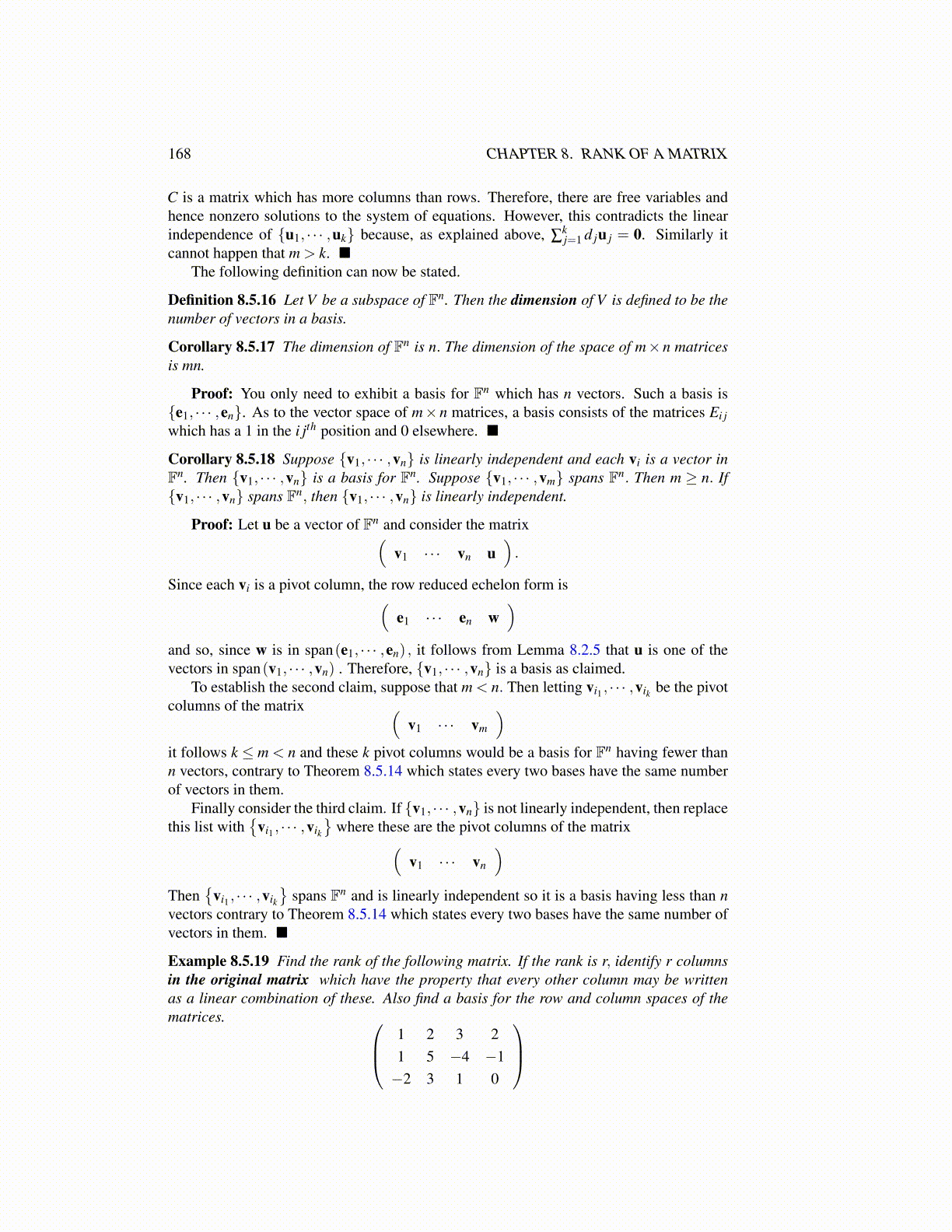
168 CHAPTER 8. RANK OF A MATRIX
C is a matrix which has more columns than rows. Therefore, there are free variables andhence nonzero solutions to the system of equations. However, this contradicts the linearindependence of {u1, · · · ,uk} because, as explained above, ∑
kj=1 d ju j = 0. Similarly it
cannot happen that m > k. ■The following definition can now be stated.
Definition 8.5.16 Let V be a subspace of Fn. Then the dimension of V is defined to be thenumber of vectors in a basis.
Corollary 8.5.17 The dimension of Fn is n. The dimension of the space of m×n matricesis mn.
Proof: You only need to exhibit a basis for Fn which has n vectors. Such a basis is{e1, · · · ,en}. As to the vector space of m×n matrices, a basis consists of the matrices Ei jwhich has a 1 in the i jth position and 0 elsewhere. ■
Corollary 8.5.18 Suppose {v1, · · · ,vn} is linearly independent and each vi is a vector inFn. Then {v1, · · · ,vn} is a basis for Fn. Suppose {v1, · · · ,vm} spans Fn. Then m ≥ n. If{v1, · · · ,vn} spans Fn, then {v1, · · · ,vn} is linearly independent.
Proof: Let u be a vector of Fn and consider the matrix(v1 · · · vn u
).
Since each vi is a pivot column, the row reduced echelon form is(e1 · · · en w
)and so, since w is in span(e1, · · · ,en) , it follows from Lemma 8.2.5 that u is one of thevectors in span(v1, · · · ,vn) . Therefore, {v1, · · · ,vn} is a basis as claimed.
To establish the second claim, suppose that m < n. Then letting vi1 , · · · ,vik be the pivotcolumns of the matrix (
v1 · · · vm
)it follows k ≤ m < n and these k pivot columns would be a basis for Fn having fewer thann vectors, contrary to Theorem 8.5.14 which states every two bases have the same numberof vectors in them.
Finally consider the third claim. If {v1, · · · ,vn} is not linearly independent, then replacethis list with
{vi1 , · · · ,vik
}where these are the pivot columns of the matrix(
v1 · · · vn
)Then
{vi1 , · · · ,vik
}spans Fn and is linearly independent so it is a basis having less than n
vectors contrary to Theorem 8.5.14 which states every two bases have the same number ofvectors in them. ■
Example 8.5.19 Find the rank of the following matrix. If the rank is r, identify r columnsin the original matrix which have the property that every other column may be writtenas a linear combination of these. Also find a basis for the row and column spaces of thematrices. 1 2 3 2
1 5 −4 −1−2 3 1 0